|
|
printable version
- js reader version
- view hidden posts
- tags and related articles
View article without comments
by Ross Plesset
Friday, Dec. 11, 2015 at 4:15 AM
A wind energy farm has desecrated sacred sites and damaged the environment in Ocotillo Valley. Also, it's dubious if any alternative energy generated has offset the fossil fuel required to build and maintain the project. The 2013 film Greed Energy documents resistance to the farm, which this article further explores and updates.
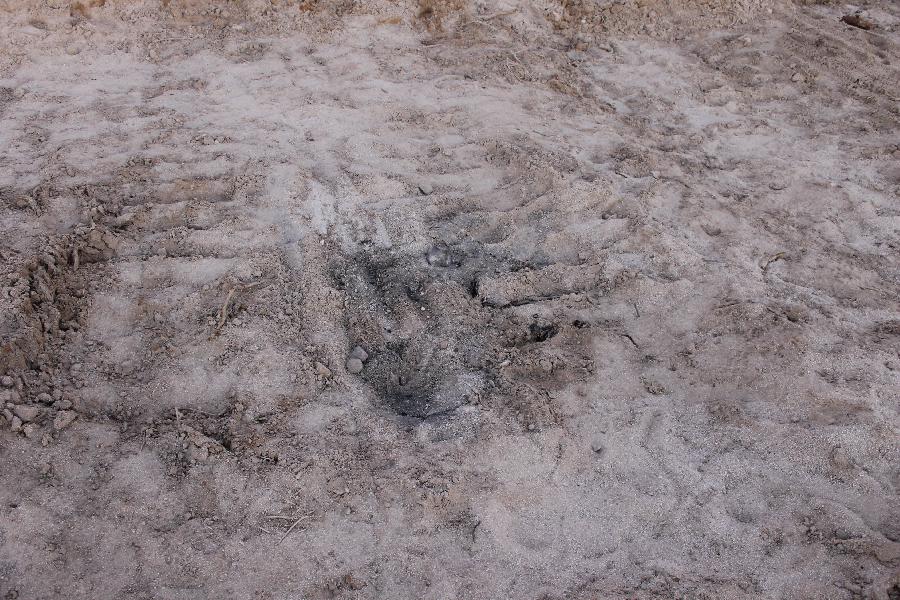
ocotilloagaveroastingpittiretread.jpg, image/jpeg, 4272x2848
Above: Agave roasting pit and tire tread from construction of wind turbines.
All photos by Jim Pelley
(This article originally appeared in Bringing the Circle Together Magazine:
http://www.aravenabovepress.com/collections/bringing-the-circle-together-magazine. )
An increasing threat to sacred sites and ecosystems is alternative energy farms (which ironically are supposed to be helping the environment). Because of federal subsidies for green energy, "the lands that have been traditionally protected from development are now fair game,” says the documentary Greed Energy by Quechan filmmaker Dan Golding (viewable online: https://vimeo.com/81119113). “Over 245 million acres of public land have been opened to development, opening the door to a modern-day Gold Rush by renewable energy speculators and developers."
In 2012, wind generators were built in Ocotillo Valley in southern California, an area long known to the Quechan as the Valley of the Dead because of ancestors traveling through en route to the next world. The installation of wind turbines, over the objection of the Quechan and other tribes (as well as non-Native residents), has desecrated sacred sites; disrupted, and even killed, wildlife and vegetation(1); and oil from the machines has been dripping into the ground.
And the generators seem to be doing little, if anything, to provide alternative energy. There is only enough wind in Ocotillo to keep them active four to five months a year. And when the energy is transported long distances (in this case to San Diego), as much as half gets spent in transmission. Furthermore, turbines require conventional grid energy for their initial start-up and to operate computers inside, which must also be cooled with fans in hot weather.
Much grid energy is also used in maintaining them—and they've required maintenance. One lost a Siemens propeller just over a year after activation. Eight months later, another caught on fire. “The amount of resources it has taken alone for one wind turbine to be decommissioned was unbelievable--the amount of cars, trucks, equipment, generators—and all of this wasn't calculated in when they did their carbon offsets to justify this project,“ says John Pelley, a resident, aerospace engineer, and long-time opponent. (He has been documenting the turbines almost daily since construction began. His videos can be seen on YouTube via Save Ocotillo: https://www.youtube.com/user/SaveOcotillo.)
“Our history tells us that we were living in different locations before the [Europeans] came on this continent,” says Quechan Tribal Elder Vernon Smith, “and we were slowly moved to where we are, our little reservation that they established for us [i.e., the Fort Yuma Indian Reservation]. But we left a lot of artifacts out there where we used to live, 100-200 miles away from where we're at.”
Smith says projects such as this, have “a tendency to unearth human remains, so we were totally against that and wanted them to avoid those sections. Unfortunately, there are more cultural resources available on that property than anywhere else. We protested. All we were saying was, 'Please protect it, move your project around it'—because that's a big area. But a lot of the companies refused to do it. In fact, they even refused to listen to us(2). They even said: 'How do you know? We don't see anything there.'” (Pattern Energy claims that neither the Quechan nor Viejas responded to a meeting invitation early on, whereas other tribes did. Smith says they were not consulted until the last minute, which according to him is a recurring pattern with developers.)
Tribes brought in forensic dogs who identified 50 possible sites. “We went to court over it,” Smith says. “They ruled against us because it wasn't proven that there was remains there. We said, 'Of course you're not going to see them because they're underground until it happens.' They continued. We are appealing it, but nothing's happening.”
Subsequently, in September 2012, Pattern Energy unearthed human bone fragments during a road construction. “They wouldn't let us in there,” Smith continues. “At one point they said, 'Oh, all we did was just put it back and left it there.' We said, 'You didn't bury it?' They said, 'No.' That's why we went over there and did our ceremonies. We didn't actually get the bone, but we were in that area. Our main concern was to try and appease the spirits that were disturbed. We do believe strongly that the spirits need to be left alone, that we need to go back and do what we can to assure them they will not be disturbed anymore. Believe me, there were a lot of people that went and saw many things out there that they couldn't believe existed, stuff that was spiritual around the area where we were performing our ceremonies. There was a lady there that had a damaged knee. She was about ready to go to surgery. We were singing and dancing—she got up and danced. Her knee was back to normal. Many things happened there that we know that the spirits were very happy we were there to support them. People don't believe that outside, but we do. It doesn't matter what anybody [else] believes. . . . . That's our responsibility to care for the ancestors that lived here a long time ago. We're still a part of them. We may live different and speak different now, but we're still the same people.”
The Ocotillo Valley is sacred to other tribes as well. The development offered funds for those that went along with it. However, “[t]hey dictated how the money was going to be used, and the tribes said, 'No, we don't agree with that; you don't know what our beliefs are.' Some of the smaller tribes went ahead and agreed to participate, but in a way they were siding with the company then. My tribe said, 'No, we don't want none of your money.' They threw out money for those [other] tribes to fight over and then the tribes were not united anymore. We saw that, we recognized it, and said 'No.'“
Meanwhile, Pattern Energy was also at odds with Indigenous people on Molokai, Hawaii (and reportedly sought to divide them, too). “The people there were totally against it, and they were kind of watching what we did here,” Smith continues. “One time they called me, and they wanted to know if we could help them out. So I and a few other council members went down there. We were taken from one village to the next, and people honored me with gifts. We talked to a lot of people. On the last day we had a summitlike conference at a high school, and a lot of people showed up: professionals, doctors, attorneys; they were against it.
“We sat on a panel, we told them basically how we fought the same company here, and they said, 'Well, that sounds good.' And maybe a month later they told us that the company had gotten out. Unfortunately for them they didn't own the land. There was one person that owned the whole island, and I guess he said, 'Well there's so much trouble it'll be hard to go forward.'
“What they were going to do was generate power and run a cable under the sea all the way to Hawaii and Oahu, and the question [of the people] was, 'What do we get out of it?' And they were concerned about the sea life, and vegetation, and what happens if the cable breaks? . . . The company left; they'll probably go back again at some point but [the people] were fortunate that they left.”
East County Magazine reports that “on Molokai, Hawaii, Pattern was found by the Public Utilities Commission to have acted under false pretenses. The PUC booted Pattern off the project and ordered Hawaiian Electric to halt the project and start over with new bidders.”
Back in southern California, more alternative energy projects are being proposed. “I think the whole Imperial Valley all the way up to Blythe and beyond are being planned for more projects,” Smith says. “Some have fallen by the wayside because they ran out of money, but there's others that come in and continue their proposed alternative energy projects. There's one right north of El Centro that's using solar panels, and we did ask, 'Why aren't you trying to use those lands that are already disturbed like the farmland?' They said they hadn't approached anybody. Apparently they did because they're now using what used to be farmland at the edge of El Centro. I said: 'It's about time they're using other land [besides] ancestral land. That's a good idea.'”
Meanwhile, Jim Pelley, et al. continue fighting the Ocotillo project, focusing on various flaws and the government's suspect handling of the approval. “To be honest, we never thought this project would go in because there was so many things wrong,” Pelley says. “We thought, 'There's no way they're going to get past this, there's no way they're going to get past that.' But they adjusted the parameters to make the project fit rather than the project fitting the parameters. We've got a couple of court cases coming up. One is going into Ninth Circuit. It's a lawsuit against BLM [Bureau of Land Management] for allowing this project to go in in the first place.
“We're going to submit a request to get public records or the power purchase agreement (we were able to get one in the beginning it, but 60% of it was redacted out. So now, after the three years, it's supposed to be available). We're going to request the agreement from the Public Utilities Commission, so we can see exactly what they promised as far as the power. The only thing we have to go on is certain numbers given during the time of selling the project.
“It's not over yet. . . . We think that it's hanging by a thread or would like to think so, anyway.”
Additionally, another wind project in the area, this one a proposal by Iberdrola Renewables in McCain Valley, west of Ocotillo, is being opposed. “We've got a Ninth Circuit appeal on the Tule Wind project,” says activist Donna Tisdale. “It was approved back in 2011, but they haven't built it yet. That was approved by San Diego County, the Bureau of Land Management, Deptartment of the Interior, and the Bureau of Indian Affairs.” However, local tribes are divided on this project. “That one's got eagle issues,” she continues.”Other tribes opposed it and complained because the golden eagles are culturally significant locally. . . . U.S. Fish and Wildlife says it's a class 1 eagle area, and Iberdrola's been having trouble getting an eagle take permit.”
Everyone interviewed expressed support for alternative energy as long as it doesn't create problems on top of those it's supposed to be solving. Pelley likes the idea of solar panels being placed over parking areas. Such panels tend to be near energy consumers and on existing developments.
In Greed Energy, Tisdale remarks, “I wish that our public officials and the public would wake up and see the damage that's being done.”
-----
(1) According to Quechan Tribal Elder Vernon Smith, there have been eagle deaths and adverse affects on tortoises, lizards, and wild goats.
Pattern Energy has equipped the Ocotillo Valley generators with a radar system (the Merlin Avian Radar) to detect birds and bats in the vicinity. When a detection occurs, the blades are supposed to shut down. However, this same system failed to prevent the death of an eagle in Spring Valley, Nevada, and in Ocotillo, birds and bats have become scarce.
“On any given day you could jump in your truck and go out in the desert and take pictures of hawks and stuff like that, and we don't see them anymore,” says 10-year resident Jim Pelley. “I don't know if they just moved out of the area or what, but it's very rare to see raptors flying around in the area anymore.” Remains of any killed bird would be rare because of coyotes “cleaning up.”
“We never see bats around here anymore,” he continues. “When the sun was going down I'd be sitting on my front porch [and] I could see the bats coming out of the mountains that are just to the north of me, and they would go out and eat bugs. I could sit on my front porch and see a bat coming over about than every 45 seconds. I timed it once. I don't see them anymore; they're gone.”
Also, studies are showing adverse affects of wind generators on humans. “We've documented low-frequency noise and infrasound,” says Donna Tisdale, another local opponent of the wind projects. “Your body may not be able to hear the infrasound because it's below the level of hearing, but your body senses it, and it senses it as a threat. So it triggers a fight-or-flight syndrome. Your body is preparing to defend itself, but it's not sure what it's defending itself from. It disrupts people's sleep, it increases stress hormones, and it can affect the inner ear. In people with suppressed immune systems, existing health problems, it just exasperates that.”
A health impact assessment was begun on members of the Manzanita tribe but never completed because a planned wind farm in their area fell through. However, “the initial information that came out was that a high percentage of the tribal family members that were involved were experiencing upper respiratory issues and all kinds of health problems,” Tisdale continues.
Also, “[a]rea residents described bizarre wildlife behavior that they attribute to infrasound and stray voltage, including 'crazed' coyotes climbing trees,” reports East County Magazine.
Landscape and vegetation has been another big concern. Pattern Energy is supposed to restore the disturbed areas. However, “they took bulldozers and bulldozed down the all the ocotillo cactus, the creosote bushes... and said they would restore all of that when they were done,” Pelley recalls. “This was thousands of years of vegetation in the desert, and we watched them just bulldoze it over, and then claim it was just temporary disturbance. So now that the project's in, we've seen their restoration attempts, and all [they've done] is they take old, dead, ground-up ocotilla branches and throw it out there on the ground. They didn't plant anything. Then every time a wind turbine breaks, they've gotta go redisturb it again because they've got to get the trucks in to clean it all up.” Pelley, et al expect that when it is finally time to decommission the generators, the areas will have to be disturbed yet again. “So it'll never be the way it was,” he lamented.
(2) Pattern Energy has prided itself on its cooperation with tribes. In addition to reducing the number of turbines by 38 based on preliminary surveys, Natalie McCue of Pattern says an additional 43 were eliminated based on concerns over viewsheds surrounding two geoglyphs.
“We had Native American monitors present every day during ground-disturbing activities during construction,” she adds, and based on the findings, 37 turbines and project facilities were relocated. When human bone fragments were found, “construction was immediately stopped”; the project was altered, moving facilities away from that area; and protocols were followed in handling the human remains. The decision to remove the bones from the site was made by the Coroner's Office and the BLM.
When tribes wanted to bring in forensic dogs, a technique McCue says is “not a recognized practice in archeology, is not approved by the BLM to date ... was never proposed in a tribal consultation,” and ultimately did not produce any tangible objects, Pattern nevertheless avoided “every single one of these 'dog alerts' out of respect for the tribes.”
McCue also points to letters of praise from the local Campo tribe, saying Pattern went above and beyond what was necessary to accommodate their concerns.
She has also expressed personal concern about natural erosion on a plateau where a spoke wheel geoglyph is located and expressed a willingness by Pattern to help address it. “I've come to learn that the spoke wheel geoglyph is a very important and spiritual area for the tribes. . . . As part of our mitigation, we're looking to see if we can do something about that. Can we stabilize the soil? Can we put in erosion protection measures to make sure that geoglyph can remain throughout the long term?”
The impact of wind farms on the wildlife is discussed at Pattern's website. “Studies have shown that wind energy has the lowest life-cycle impacts to wildlife of any source of utility-scale electricity generation, and we proudly operate under a longstanding legacy of care for all wildlife. As with other types of man-made structures, sometimes birds make contact with wind turbines, but avian fatalities at Ocotillo Wind are low.“
Pattern says the cause of the aforementioned fire in one of the turbines is still being investigated by Siemens.
Report this post as:
by Ross Plesset
Friday, Dec. 11, 2015 at 4:15 AM
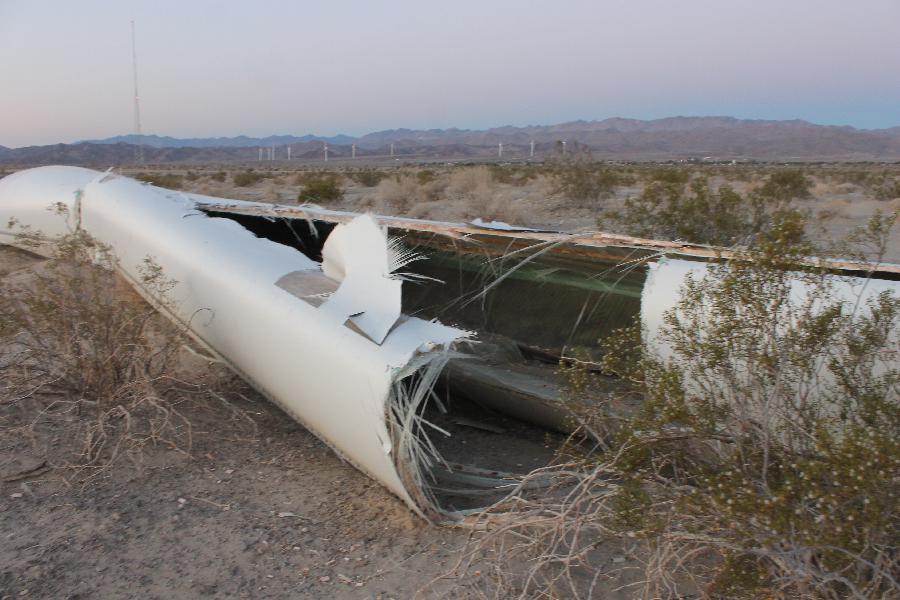
ocotillafallenblade.jpg, image/jpeg, 4272x2848
This occurred after just a little over a year of operation. Photo: Jim Pelley.
Report this post as:
by Ross Plesset
Friday, Dec. 11, 2015 at 4:15 AM
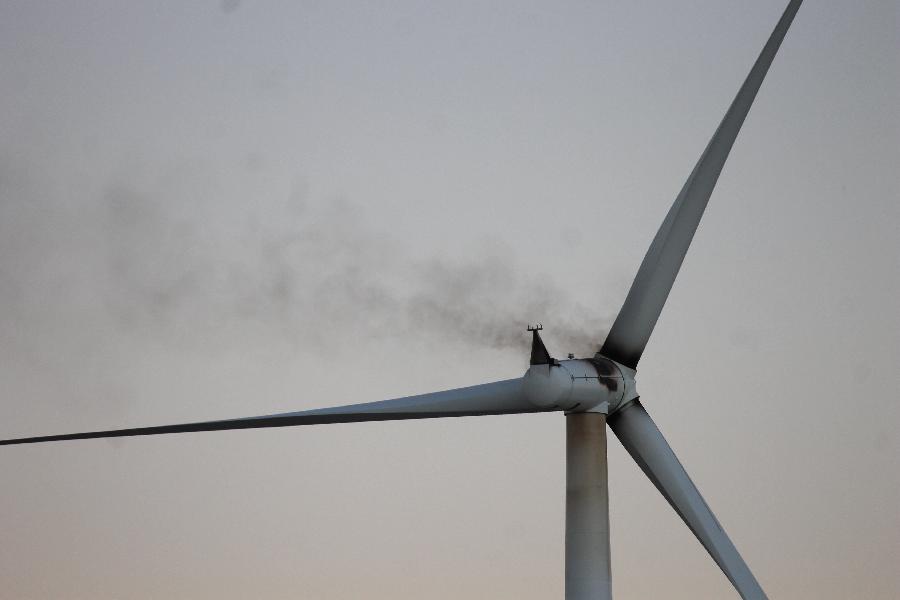
ocotilloburningbladebestestbyjimpelley.jpg, image/jpeg, 4272x2848
Report this post as:
by Ross Plesset
Friday, Dec. 11, 2015 at 4:15 AM

ocotillovernonsmith.jpg, image/jpeg, 2848x4272
Report this post as:
by Ross Plesset
Friday, Dec. 11, 2015 at 4:15 AM
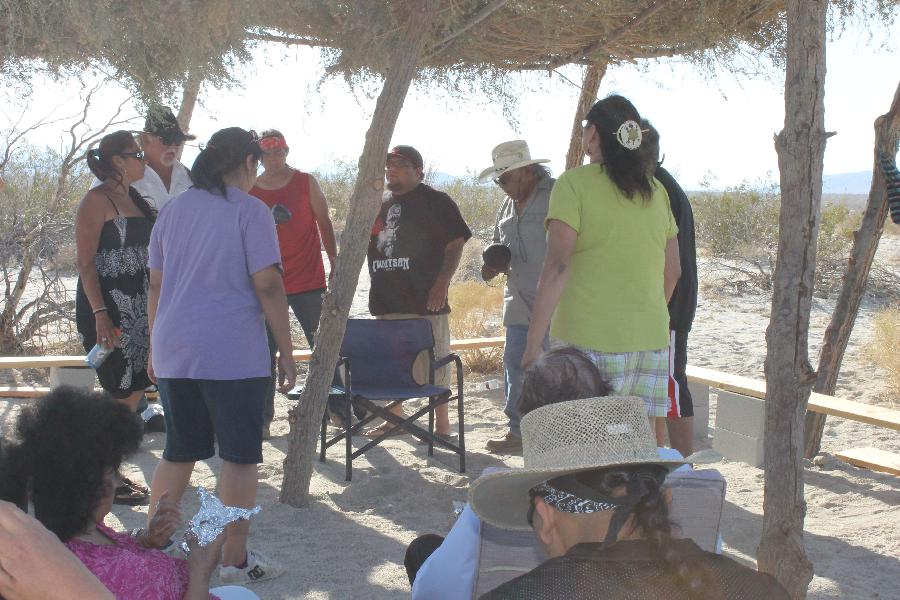
ocotillosacredsiteceremony3.jpg, image/jpeg, 4272x2848
Report this post as:
by Ross Plesset
Friday, Dec. 11, 2015 at 4:15 AM
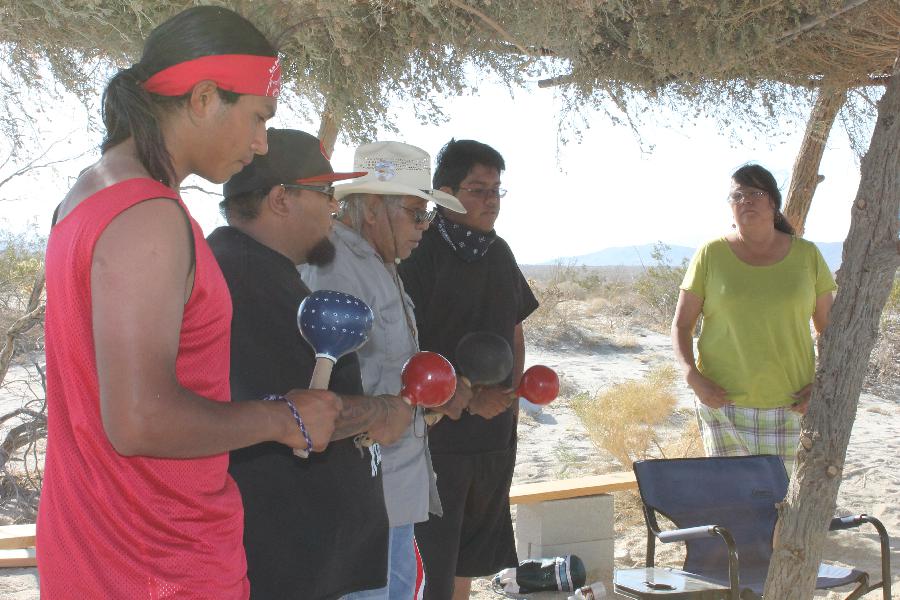
ocotillosacredceremonycurattles.jpg, image/jpeg, 4272x2848
Report this post as:
by Ross Plesset
Friday, Dec. 11, 2015 at 4:15 AM
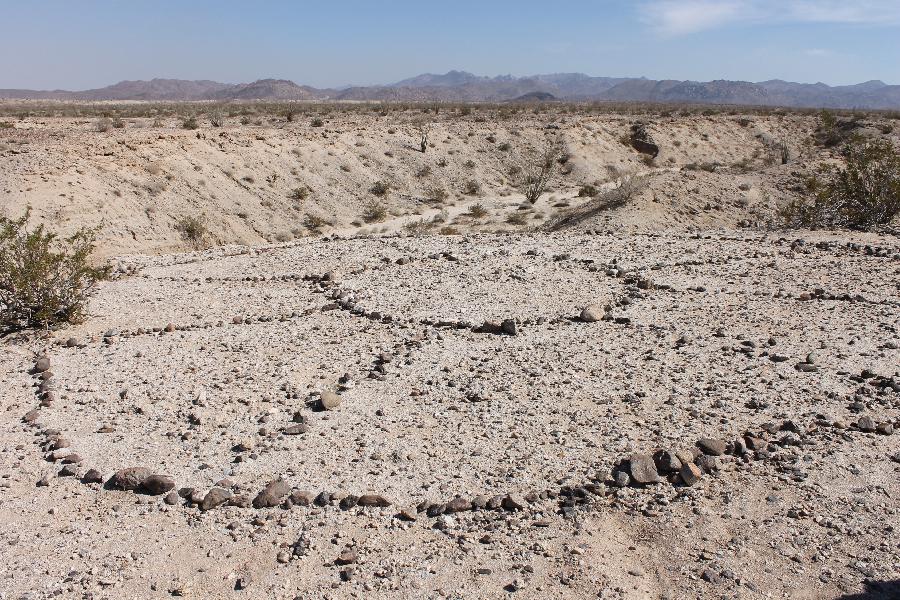
octillogeoglyph.jpg, image/jpeg, 4272x2848
Report this post as:
by Ross Plesset
Friday, Dec. 11, 2015 at 4:15 AM

ocotillostopwindprojectsign.jpg, image/jpeg, 4272x2848
Report this post as:
by Eric Matteson
Tuesday, Dec. 05, 2017 at 11:29 PM
ericmatteson2001@yahoo.com
high pressure
Renewable energy needs to be considered.
for electricity generation.
Solar energy can be obtained from well lit places
that do not have crops that need the sunlight.
There are two methods of converting sunlight into
electricity.
The most expensive method is to use photovoltaic
solar cells. Photovoltaic solar cells have the
lowest impact on the environment of any energy
production. Solar cells can safely be used even
in inhabited areas.
Concentrated thermal solar power is cheaper than using
photovoltaic solar cells but there is a very bright spot
that could be hazardous to vision in populated areas.
Concentrated solar power plants are built in remote
uninhabited areas. Concentrated solar heat can be stored
into molten salt and then steam can be generated from the
stored heat in the molten salt to provide electricity
even when a cloud passes in front of the sun for a few
minutes.
........
Wind turbine energy can be obtained from windy areas
even at night.
Wind turbines can be built on farmland without taking
sunlight away from crops.
........
Hydroelectric power plants of the past have initially
assumed a constant unchanging demand for hydroelectric
power.
This is no longer the case.
Demand for hydroelectric power might be 50 times greater
when the sun is not shining and there is no wind.
This problem can be solved by greatly increasing the
number of generators at every hydroelectric dam to
greatly increase the emergency peak power output.
........
Reconfiguring the power grid to combine hydroelectric
power with wind power and solar power will make
renewable energy considerably more reliable so
that fossil fuels will no longer be needed for
electricity generation.
Problems with renewable energy.
- hydroelectric power plants
have low capacity.
- windmills sometimes break
Greatly increasing the number of
generators at every hydroelectric
dam will increase the amount of
emergency hydroelectric power available
when the sun is not shining and the
wind is not blowing.
Windmill blades need to be thicker
at the end that connects to the shaft
because there is a lot of leverage
there that is increased during a wind gust.
|
Fossil fuels hurt the environment far more
than renewable energy such as solar and wind.
Natural gas is extremely bad for the environment.
Natural gas is extremely dangerous to store.
Aliso Canyon is a natural gas storage facility that
is already having severe problems.
The biggest danger at Aliso Canyon is
the very high pressure that natural gas
is stored at.
Natural gas pressure is too high because there is
too much demand for natural gas.
Reducing the demand for natural gas will also
reduce the needed pressure that has to be used to
store natural gas!!
| Table of reducing natural gas demand. | | Cause of demand | Way to reduce that demand | Natural gas hot water heaters
Installation of low pressure
shower heads has redirected hot water
out of the safety release valve
and has not really saved
water or natural gas!
|
| Require every landlord
to reduce water heater temperature to
a reasonable level.
| | Fast food places | Fast food places should add efficient
microwave ovens to their portfolio
of tools instead of having natural gas
as their only way to cook!
| Electricity generation is 70%
from natural gas | Replace goal of
only 30% of electricity being generated
by renewables with a much larger amount
of solar and wind energy.
Install more solar panels now.
Build more windmills now!
|
Natural gas buses driving
big crowds long distance to jury duty |
| Even just using budget
reconciliation to set the fine
for dodging jury duty to zero
will allow people who live too far
from their summoning courthouse to
conserve natural gas by not riding
additional crowded buses long distance
to jury duty.
link to jury duty article
high speed link to part of jury duty article
|
Reducing demand for natural gas
will also reduce the required
storage pressure and reduce the
risk of the next LEAK!!
|
Report this post as:
|










